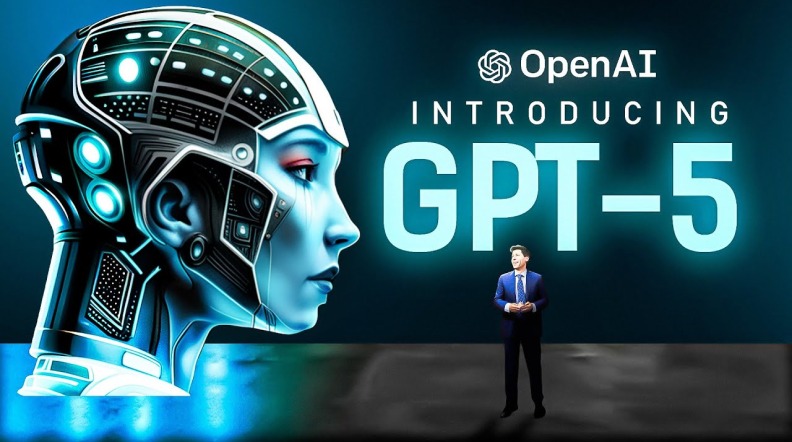GPT-5: A Comprehensive Guide to the Next Generation AI






The release date for GPT-5 marks a significant milestone in the field of artificial intelligence. As the latest model of generative AI, it is poised to redefine the capabilities of AI tools. Experts and enthusiasts alike are eagerly awaiting its arrival, anticipating the advancements it will bring to technology and society.
GPT-5 is expected to surpass its predecessors in complexity and functionality. Its development reflects the rapid progress in AI research and application. This guide aims to provide a comprehensive overview of GPT-5, exploring its features, potential impacts, and the technological innovations it embodies.
The Evolution and Anticipation Surrounding GPT-5
The release date for GPT-5 has generated excitement and speculation among tech communities. As the latest model, it promises to push the boundaries of what generative AI can achieve, setting a new standard for future developments.
A Brief History of GPT Models
The journey of GPT models began with the vision of Greg Brockman, co-founder of OpenAI, and his team. They aimed to create powerful language models using neural networks. These models, starting with smaller versions and evolving to contain up to 175 billion parameters, have significantly advanced artificial intelligence, making complex language understanding and generation possible.
From GPT-1 to GPT-4: The Journey So Far
The evolution of GPT models from GPT-1 to GPT-4 has been marked by significant advancements in neural network technology and language models. Each version brought improvements in understanding and generating human-like text, making AI more versatile and capable of handling a variety of tasks.
GPT-4, with its sophisticated neural network architecture, set new benchmarks in language comprehension and production. Its success has paved the way for the highly anticipated GPT-5, promising even greater capabilities and applications in the world of AI.
What Sets GPT-5 Apart from Its Predecessors
GPT-5 is expected to introduce groundbreaking features that distinguish it from its predecessors. With advancements in AI technology, GPT-5 aims to offer enhanced understanding and generation of human language, making interactions with AI more natural and effective.
One of the key areas of improvement is expected to be in the model’s ability to comprehend and produce complex texts with greater accuracy. This will enable more sophisticated applications of AI across various fields, from healthcare to education, and beyond.
Current Developments and Expected Features
As development progresses, GPT-5 is anticipated to showcase enhancements in AI capabilities. These include better reasoning, understanding of context, and the ability to generate more coherent and relevant responses. The AI community is closely monitoring these developments, eager to see how GPT-5 will shape the future of technology.
Enhanced Multimodality and Improved Reasoning
GPT-5 is expected to build on the progress made by GPT-4 Turbo, especially in areas of multimodality and reasoning. By processing a larger training data set, GPT-5 aims to understand and generate content that closely mimics human thought processes. This capability will significantly enhance AI systems’ effectiveness in various applications.
Moreover, GPT-5’s advancements in the context window, expanding to potentially 1 million tokens, will allow for a deeper understanding of context. This improvement in AI models will open new avenues for progress in making AI interactions more seamless and intuitive.
Customization Capabilities and Accuracy Enhancements
With GPT-5, customization and accuracy in AI applications are expected to reach new heights. Users will benefit from an AI tool that not only understands their needs better but also provides more precise and relevant information. This level of customization will revolutionize how businesses and individuals use AI, making it a more integrated part of daily operations and decision-making processes.
The accuracy enhancements in GPT-5 will reduce the margin of error in AI-generated content, making it more reliable for critical applications. This improvement is crucial for sectors like healthcare and legal, where precision is paramount. GPT-5’s advancements promise to make AI an indispensable tool across various industries.
The Societal Impact of GPT-5
The introduction of GPT-5 is expected to have a profound impact on society, transforming how we work, learn, and communicate. Its advancements in AI will open up new possibilities for innovation and efficiency, reshaping the technological landscape.
Regulatory Discussions and Ethical Considerations
As GPT-5’s capabilities expand, discussions around regulation and ethics are becoming increasingly important. OpenAI CEO Sam Altman has engaged in these conversations, notably on platforms like the “Unconfuse Me” podcast, highlighting the need for responsible AI development and usage. These discussions are crucial in ensuring that AI technologies like GPT-5 benefit society while minimizing potential risks.
Ron DeSantis Signs Bill Requiring Parental Consent
In response to the growing influence of AI, legislation like the bill signed by Ron DeSantis requiring parental consent for AI usage in schools has emerged. This reflects the societal push towards establishing boundaries and safeguards around AI technologies, ensuring they are used in ways that align with ethical standards and societal values.
The legislation is a step towards addressing concerns about privacy, data security, and the appropriate use of AI in sensitive environments. It underscores the importance of regulatory frameworks in guiding the development and application of technologies like GPT-5.
Global Calls for Regulation and the Open Source Debate
The anticipation surrounding GPT-5 has reignited the debate over open-source AI models versus proprietary technologies. Global calls for regulation are driven by concerns over transparency, accountability, and equitable access to AI advancements.
This debate highlights the need for a balanced approach to AI development, one that fosters innovation while ensuring ethical use and widespread benefits. The outcome of this discussion will have significant implications for the future of AI, including the development and deployment of models like GPT-5.
Potential Applications and Concerns
GPT-5’s advancements bring a wealth of potential applications, from enhancing educational tools to streamlining business processes. However, these opportunities also come with concerns about privacy, security, and the ethical use of AI. Addressing these concerns is crucial for maximizing the benefits of GPT-5 while mitigating risks.
Joe Biden’s Clean Energy Initiative and the Role of AI
Joe Biden’s clean energy initiative highlights the role of AI in tackling global challenges. GPT-5, with its advanced capabilities, could play a pivotal role in analyzing data and optimizing strategies for renewable energy sources. This application of AI underscores its potential to contribute to sustainable development goals.
The initiative also reflects the broader trend of leveraging AI to address complex societal issues. By harnessing the power of GPT-5, policymakers and researchers can accelerate progress towards a cleaner, more sustainable future.
The Influence of AI on Social Media and Parental Control Measures
The impact of AI on social media has been profound, reshaping how content is created, shared, and consumed. GPT-5 is expected to further influence this landscape, offering new tools for content generation and moderation. This has implications for parental control measures, as AI can help monitor and filter content to protect younger audiences.
As AI becomes more integrated into social media platforms, the need for effective parental control measures grows. GPT-5’s advancements could provide more sophisticated solutions, helping parents navigate the challenges of digital safety for their children.
Technological Advancements and Challenges
Exploring the technological advancements and challenges of GPT-5 reveals a landscape filled with innovation and hurdles. This next-generation AI is pushing the boundaries of what machines can do, but not without facing significant obstacles in hardware and ethical considerations.
Behind the Scenes: The Technology Powering GPT-5
The development of GPT-5 represents a leap in AI capabilities, powered by cutting-edge technology. Behind its remarkable abilities lies a complex network of algorithms and hardware, designed to handle massive datasets and perform complex tasks with unprecedented precision.
OpenAI’s GPU Limitations and Roadmap Updates
One of the critical challenges in the development of GPT-5 has been overcoming GPU limitations. GPUs, crucial for training AI models, have struggled to keep up with the demand for processing power required by such advanced AI. OpenAI has had to navigate these limitations carefully, optimizing their training hardware to make the most of available resources. This optimization includes developing more efficient algorithms that can do more with less power.
Furthermore, OpenAI’s roadmap updates have shed light on their strategies to surpass these hurdles. By collaborating with leading hardware manufacturers and investing in research on training data efficiency, they aim to enhance the capabilities of their generative pre-trained transformers. These efforts ensure that each version of the model, including GPT-5, sets new benchmarks in AI performance.
The Significance of Data Centers and Model Scaling Laws
Data centers play a pivotal role in the scalability of AI models like GPT-5. These centers house the servers and GPUs that power the training phases of development, dealing with massive datasets to refine the model’s accuracy and efficiency. The significance of these data centers cannot be overstated, as they provide the foundation upon which the scalability of AI technologies rests.
Moreover, model scaling laws have emerged as a guiding principle in the advancement of AI. These laws predict how increasing the size of AI models, in terms of parameters and training data, improves performance up to a point. Understanding these laws has been crucial for OpenAI in strategically scaling GPT-5, ensuring that each increase in size yields meaningful improvements in capabilities.
The Future of Virtual and Augmented Reality
As GPT-5 advances, it also paves the way for groundbreaking applications in virtual and augmented reality. These technologies stand to benefit immensely from the enhanced understanding and generative capabilities of GPT-5, offering more immersive and interactive experiences.
3 Body Problem VR Headset Review: A Glimpse into the Future
The 3 Body Problem VR headset exemplifies the potential of combining GPT-5 with virtual reality technology. This headset offers an unparalleled experience, with highly detailed virtual environments and interactive scenarios that adapt in real-time. The integration of GPT-5 allows for dynamic storytelling and simulations, making each virtual experience unique and deeply engaging.
Moreover, the AI’s understanding of natural language and its ability to generate responses in real-time enhances the interactivity of VR experiences. Users can communicate with virtual characters in ways previously impossible, thanks to the sophisticated language models like GPT-5. This integration marks a significant step forward in making virtual worlds more realistic and interactive.
Microsoft’s Forgotten Windows Feature and Its Update After 30 Years
Microsoft’s revival of a long-forgotten Windows feature, updated with GPT-5 integration, demonstrates the vast potential of AI in enhancing user interfaces. This feature, originally designed to simplify navigation and task management, has been transformed into a powerful tool that understands and anticipates user needs with remarkable accuracy.
By leveraging GPT-5, the updated feature now offers personalized assistance, adapting to the user’s habits and preferences to streamline workflow and increase productivity. This advancement not only showcases the practical applications of GPT-5 in everyday technology but also sets a new standard for AI-enhanced user experiences.
GPT-5 in the Real World
GPT-5 is not just a theoretical marvel; its real-world applications are transforming industries, enhancing productivity, and opening new avenues for innovation.
Practical Applications of GPT-5
From healthcare to entertainment, GPT-5 is making its mark across various sectors. Its advanced AI capabilities enable it to perform tasks with a level of sophistication and understanding that was previously unattainable, paving the way for groundbreaking applications.
From Fitness Instructor to Systems Advisor: A Transition Story
The versatility of GPT-5 is showcased in its ability to serve as both a fitness instructor and a systems advisor. In the realm of fitness, it provides personalized workout plans and nutritional advice, adapting to each user’s progress and goals. This personalization extends beyond fitness, as GPT-5 also excels in technical domains, offering expert advice on system configurations and troubleshooting, demonstrating its wide-ranging applicability.
This transition from fitness to technical advising underscores the adaptability of GPT-5. Whether it’s guiding users through a workout or navigating complex technical challenges, GPT-5’s advanced algorithms and vast knowledge base enable it to tackle a broad spectrum of tasks with ease and precision.
Organizations Empowering Women in Tech Through AI
Organizations focused on empowering women in the tech industry are leveraging GPT-5 to create more inclusive and supportive environments. By using AI to provide mentorship, training, and resources, these organizations are breaking down barriers and fostering a culture of equality and innovation.
GPT-5’s ability to customize learning paths and provide real-time support makes it an invaluable tool in these efforts. Its deployment in programs aimed at women in tech not only enhances learning outcomes but also inspires a new generation of female technologists to explore the possibilities of AI.
OpenAI’s CEO Updates and Industry Expectations
As GPT-5 continues to evolve, OpenAI’s CEO provides insights into its development and the broader impact on the industry. Expectations are high, with GPT-5 poised to redefine the boundaries of what AI can achieve.
The Truth Behind the GPT-5 Development Rumors
Amidst widespread speculation, the truth about GPT-5’s development highlights OpenAI’s commitment to advancing AI technology while addressing ethical concerns. The organization has taken a transparent approach, sharing updates on progress and challenges, dispelling rumors with facts.
This openness has not only built trust but also fostered a collaborative environment where the AI community can contribute to the model’s development. By engaging with researchers, developers, and the public, OpenAI ensures that GPT-5 benefits from a broad range of insights and expertise.
OpenAI’s Diplomatic Missions and Global AI Race
OpenAI’s engagement in diplomatic missions underscores the global significance of GPT-5. As nations recognize the strategic importance of AI, OpenAI’s efforts to collaborate and share knowledge have become crucial in shaping a future where AI benefits all of humanity.
These missions not only facilitate international cooperation but also highlight OpenAI’s role in the global AI race. By promoting an ethos of openness and collaboration, OpenAI aims to ensure that advancements in AI, like GPT-5, contribute to global progress and prosperity.
Final Reflections: The Road Ahead for GPT-5
The journey of GPT-5 is far from over. As it continues to evolve, the balance between innovation and safety remains paramount. The future holds great promise, with GPT-5 leading the way towards a new era of AI.
The Balancing Act: Innovation, Safety, and the Future
The journey towards the next-generation model of GPT-5 represents a delicate balance between the pursuit of groundbreaking innovation and the imperative of ensuring safety. As developers, including giants like Google with its Google Pixel and visionaries like Elon Musk, delve into the complexities of artificial intelligence, they must navigate the challenges of advancing technology while safeguarding against potential risks. This equilibrium is vital for fostering a future where AI can serve humanity without unintended consequences.
Embracing the Benefits While Mitigating Risks
The development and deployment of GPT-5 come with the promise of unparalleled benefits, from revolutionizing industries to enhancing everyday life. However, these advancements are not without their risks, including ethical dilemmas and the potential for misuse. It is crucial for stakeholders to adopt a proactive approach, anticipating and addressing these challenges through robust frameworks and ethical guidelines. This involves a collaborative effort among tech companies, researchers, and policymakers to ensure that the benefits are maximized while the risks are minimized.
Furthermore, as this technology becomes more integrated into society, it is essential to foster an informed public dialogue about its impact. Educating users, promoting transparency, and encouraging responsible usage are key steps in building a foundation of trust and understanding. By doing so, society can harness the full potential of GPT-5 while ensuring that ethical considerations and safety remain at the forefront of this technological evolution.
The Continuous Journey Towards Artificial General Intelligence (AGI)
The development of GPT-5 marks a significant milestone in the quest for Artificial General Intelligence (AGI), where machines can understand, learn, and apply knowledge across a broad range of tasks as competently as a human. This path is filled with both excitement and caution, as each advancement brings us closer to realizing AGI’s vast potential. The pursuit is not just about creating machines that can perform tasks but about unlocking new frontiers of knowledge and capability that can benefit all of humanity.
As we advance on this journey, it is imperative to maintain a vigilant focus on the ethical implications and societal impacts of AGI. This means ensuring inclusivity in technology development, preventing biases, and safeguarding against the concentration of power. Through collaborative international efforts and a commitment to shared values, the pursuit of AGI can be guided in a direction that honors the dignity of all people and seeks the greatest good for society.